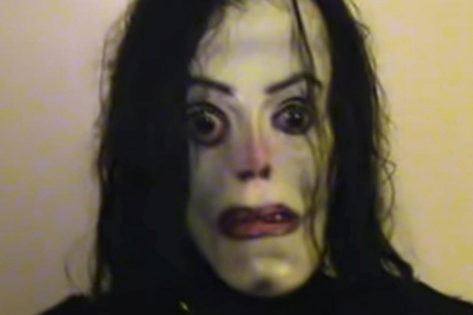They live in the depths of our children's imagination (as they did in ours during childhood) and go for a walk when the sun goes down. Where do all those monsters that terrify them come from? "Usually from the deepest of fears of any human being, of transforming the peaceful into terrifying , the kind into dangerous. Many times designed for adults, but that in the eyes of children have a greater impact," explains Dr. Francisco Javier Quintero, director of PsiKids.
They know that they do not exist in real life, that they are fictional characters, that are not hidden in the closet, nor lurk in the dark under their beds or hidden behind the door, but they do not stop fearing them. There is no rationality that is worth when one is eight years old and the bedroom light goes out. It is then that 'appear' Momo, the clown of 'It or the Ayuwoki, the beings that terrify the children of the 21st century. " The horror characters have always existed, what has changed now is the exposure of the little ones to those creatures . Before it was easier to limit this access. Now, we could say that they are everywhere, on the internet and even in the marquee from the bus stop at the school gate. "
The scariest thing is that these 'spawners' represent " figures close to or linked to the lives of children , which makes it easier to blur that line of the imagined." While with 'It' "has brought to the screen the fears of any child, that harmless, like a clown, becomes harmful, Momo has pierced the screen and tries to sneak into our lives through the social networks".
THE INTERNET INFLUENCE
Quintero emphasizes that, on the internet there are "two important and key phenomena" to understand how exposed our children are to these figures: "Any terminal with access to a browser is a window to the world through which any child can travel to magnificent sites or horrible, with a significant difficulty in setting limits. " This is what is known as " active transgression , that is, access to inappropriate content."
As if that were not enough, the phenomenon also occurs in the other direction, "so that the child receives information that he should not see, either through a" pop-up "or in the form of content forwarded by other people. passive transgression . "
What role do the media play in the construction of this childish world of shadows?
"Sometimes, they make something that was not relevant relevant and, together with social networks (as happened for example with Momo), they make a small sculpture can become a terrifying being and well-known by the little ones. Also, they have their part of responsibility at the time when they do not meet the schedules of child protection . "
SECURITY
What can parents do to help our children? "The most important thing is to accompany them in their emotion. It's fear is a normal reaction, with great functional and adaptive value. Throughout life children will have what we call normal evolutionary fears, which is part of the normal development of the child and their contents tend to be changing and evolve as the child grows, the most important thing is to convey security and confidence, supporting them when they face their fears.
What we should not do is "victimize children or minimize their emotion." It is convenient to remember that "your child will be brave if he is able to face his fear, not if he is not afraid."
Is it good to place them before what they fear, show them the images to show them that they are false? Dr. Francisco Javier Quintero takes us out of doubt: "No, it is not necessary to generate situations of exposure to what they fear. If they have already had contact with these images, it may be an option to teach them the characterization process of that character , but sometimes that is not going to be enough. Not all children, especially the youngest ones, are cognitively prepared to elaborate on these realities without fearing them. Nor is it effective to approach them with a rational discourse, since fear has an emotional basis " .
HOW TO ACT
How should we act if they are so terrified that they are unable to walk home alone at nightfall or to sleep alone? "In any way and intensity that fear manifests, it is important that they feel that we empathize with them , that we understand that they feel this way, and progressively dismantle the fear, but always with love and respect; minimize or ridicule it, although as adults we It seems like a good strategy, it can make them feel misunderstood and cause them to stop using their parents to feel protected. "
The physical accompaniment when they are afraid to go to sleep or walk alone at home, is, in a first phase and short in time, "a good option, to progressively help them to expose themselves, gradually acquiring security in case themselves. "
However, the objective is that this fear has the least possible impact on its habitual functioning. "If we detect that it is maintained over time, or that it leads to regressive behaviors, such as not being able to sleep alone, it is advisable to consult with a specialist."
According to the criteria of The Trust Project
Know more- LOC
- Internet
- Psychology
Desperate Mother Yes to the 'Santillana Holidays'
Desperate Mother My child does not eat me (nor has she ever eaten me)
NOVIAZGOSTelma Ortiz, in love with Robert Gavin Bonnar, former husband of the violinist of The Corrs

